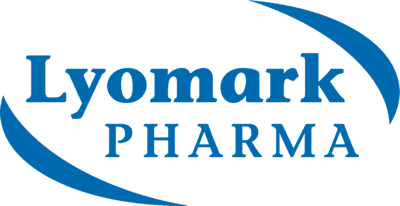预约演示
更新于:2025-05-07
SSTR1
更新于:2025-05-07
基本信息
别名 somatostatin receptor 1、Somatostatin receptor type 1、SRIF-2 + [5] |
简介 Receptor for somatostatin with higher affinity for somatostatin-14 than -28. This receptor is coupled via pertussis toxin sensitive G proteins to inhibition of adenylyl cyclase. In addition it stimulates phosphotyrosine phosphatase and Na(+)/H(+) exchanger via pertussis toxin insensitive G proteins. |
关联
5
项与 SSTR1 相关的药物作用机制 SSTR1激动剂 [+4] |
原研机构- |
最高研发阶段批准上市 |
首次获批国家/地区 加拿大 |
首次获批日期1997-11-10 |
作用机制 PKM2抑制剂 [+1] |
在研机构- |
在研适应症- |
最高研发阶段终止 |
首次获批国家/地区- |
首次获批日期1800-01-20 |
115
项与 SSTR1 相关的临床试验NCT06784752
A Phase III Multi-center, Randomized, Open-label Study to Evaluate the Efficacy and Safety of [177Lu]Lu-DOTA-TATE in Patients Newly Diagnosed With Grade 1 and Grade 2 (Ki-67 <10%) Advanced GEP-NET With High Disease Burden (NETTER-3)
The purpose of the current study is to evaluate the efficacy and safety of [177Lu]Lu-DOTA-TATE plus octreotide long-acting release (LAR) versus octreotide LAR alone in newly diagnosed patients with somatostatin receptor positive (SSTR+), well differentiated Grade1 and Grade 2 (G1 and G2) (Ki-67 <10%) advanced gastroenteropancreatic neuroendocrine tumors (GEP-NETs) with high disease burden
开始日期2025-05-06 |
NCT06456359
Pasireotide as Maintenance Treatment With Monthly Deep Intramuscular Injection in SSTR2/3/5-Expressing Synovial Sarcoma and Desmoplastic Small Round Cell Tumor
PAMSARC is a non-commercial interventional Phase 2 clinical trial of academic research institutions, with its primary goal being to improve medical treatment of fusion driven Desmoplastic small round cell tumor (DSRCT) and Synovial sarcoma (SySa) in young adults and adolsecents with male predominance.
Current management of DSRCT and SySa includes chemotherapy, radiation and aggressive cytoreductive surgery. Despite advances in multimodal therapy, outcomes remain poor with frequent disease recurrence and very limited options for patients with advanced disease.
Selected somatostatin receptor (SSTR) family members, i.e., SSTR2, SSTR3 and SSTR5, are frequently overexpressed in DSRCT and SySa, providing the rationale for treatment with somatostatin analogues (SSA).
Pasireotide is a SSA with high affinity for SSTR1, -2, -3, and -5 and is approved for the treatment of Cushing's disease and acromegaly and has also shown activity in other cancers. In patients with advanced stage DSRCT and SySa, conventional chemotherapeutic approaches frequently lead to disease response, however, the duration of progression-free time after chemotherapy is short. The targeted approach with pasireotide after initial intensive multimodal treatment may have the potential to significantly improve outcome.
Current management of DSRCT and SySa includes chemotherapy, radiation and aggressive cytoreductive surgery. Despite advances in multimodal therapy, outcomes remain poor with frequent disease recurrence and very limited options for patients with advanced disease.
Selected somatostatin receptor (SSTR) family members, i.e., SSTR2, SSTR3 and SSTR5, are frequently overexpressed in DSRCT and SySa, providing the rationale for treatment with somatostatin analogues (SSA).
Pasireotide is a SSA with high affinity for SSTR1, -2, -3, and -5 and is approved for the treatment of Cushing's disease and acromegaly and has also shown activity in other cancers. In patients with advanced stage DSRCT and SySa, conventional chemotherapeutic approaches frequently lead to disease response, however, the duration of progression-free time after chemotherapy is short. The targeted approach with pasireotide after initial intensive multimodal treatment may have the potential to significantly improve outcome.
开始日期2024-12-19 |
NL-OMON57054
*Managing pasireotide-associated hyperglycaemia in acromegaly with eucaloric very-low carbohydrate ketogenic diet versus diabetes medication: a multicentre, randomized, open-label proof-of-concept study* - PasiAcroKeto
开始日期2024-07-01 |
申办/合作机构- |
100 项与 SSTR1 相关的临床结果
登录后查看更多信息
100 项与 SSTR1 相关的转化医学
登录后查看更多信息
0 项与 SSTR1 相关的专利(医药)
登录后查看更多信息
440
项与 SSTR1 相关的文献(医药)2025-03-01·Genes & Diseases
BBOX1, LACC1, MMP7 and SSTR1 as common predictors in obesity and non-alcoholic fatty liver disease
Article
作者: Feng, Yibin ; Li, Danyun ; Zhong, Nan ; Luo, Yang ; Zheng, Yiyuan ; Zheng, Jiyuan ; Huang, Peizhen ; Luo, Dongqiang ; Huang, Chaoyuan ; Wang, Ning ; Chen, Guoming
2025-01-01·Breast Cancer
A genome-wide CRISPR/Cas9 knockout screen identifies SEMA3F gene for resistance to cyclin-dependent kinase 4 and 6 inhibitors in breast cancer
Article
作者: Kitagawa, Yuko ; Wang, Xinyue ; Kameyama, Tomoe ; Takahashi, Maiko ; Seki, Tomoko ; Takeuchi, Makoto ; Nagayama, Aiko ; Kawai, Yuko ; Hayashida, Tetsu ; Miyao, Kazuhiro ; Yokoe, Takamichi
2024-12-01·Computational and Structural Biotechnology Journal
Exploring key features of selectivity in somatostatin receptors through molecular dynamics simulations
Article
作者: Malloci, G ; Gervasoni, S ; Guccione, C ; Ruggerone, P ; Bosin, A ; Öztürk, I
5
项与 SSTR1 相关的新闻(医药)2025-04-25
·医药观澜
今日(4月25日),中国国家药监局(NMPA)官网最新公示,Recordati集团中国全资子公司锐康迪医药申报的注射用双羟萘酸帕瑞肽微球的上市申请已获得批准。根据NMPA药品审评中心(CDE)优先审评公示,该药本次获批用于治疗无法手术或手术后未治愈和通过另一种生长抑素类似物治疗控制不佳的成人肢端肥大症患者。公开资料显示,这是一款长效帕瑞肽产品(pasireotide pamoate)。此前,博鳌乐城维健罕见病临床医学中心已经引进该产品治疗肢端肥大症患者。截图来源:NMPA官网肢端肥大症是由生长激素(GH)和胰岛素样生长因子-1(IGF-1)分泌过多引起的一种罕见的、使人衰弱的内分泌疾病,该病已经在中国被纳入《第二批罕见病目录》。在大多数情况下,这种疾病是由脑垂体上的非癌性肿瘤引起的。长期暴露于生长激素和IGF-1可能会导致患者经历极端的身体变化,包括手、脚和面部特征的增大。肢端肥大症使患者死亡率增加2~3倍,并和严重的健康并发症有关,包括心脏病、高血压、糖尿病、关节炎和结肠癌。肢端肥大症治疗的总体目标是抑制GH过度分泌,降低IGF-1的水平,减少并发症,降低死亡率。长效帕瑞肽(即双羟萘酸帕瑞肽)为第二代生长抑素类似物(SRL),生长抑素正是GH分泌的生理抑制剂。与第一代SRL相比,长效帕瑞肽增强了生长抑素受体(SSTR) 的结合谱,即对SSTR1、2、3和SSTR5亚型具有高亲和力,尤其对SSTR5的亲和力最高,具有更好的临床和生化控制率,且安全性良好。对于不能选择手术或手术后尚未治愈,且使用第一代SRL治疗不能充分控制的成人肢端肥大症患者,长效帕瑞肽可以作为新的治疗选择。此前,双羟萘酸帕瑞肽已获得欧洲药品管理局(EMA)和美国FDA批准治疗成人肢端肥大症患者。根据文献报道,在一项3期PAOLA研究中,尽管入组患者在研究开始前接受了≥6个月的octreotide/lanreotide(活性对照)治疗,但肢端肥大症仍未得到控制。与继续使用活性对照药物治疗相比,更多的患者在使用长效帕瑞肽治疗6个月后达到了生化控制。在该核心研究结束时,接受40或60mg长效帕瑞肽治疗后生化指标受控的患者可以在延长期研究中继续使用相同剂量;如果未受控,则可接受60mg的长效帕瑞肽治疗。对于使用活性对照药物但未受控的患者,则切换为40mg的帕瑞肽治疗,如果在延长期研究的第16周仍未受控,则增加剂量。在延长期研究期间,共有173名患者接受了长效帕瑞肽治疗。结果显示,长效帕瑞肽的耐受性良好且疗效显著,能够长期维持肢端肥大症患者的生化控制并改善关键症状。长效帕瑞肽在长达5.8年的治疗期间有效且持续地降低了GH和IGF-I水平;37.0%的患者在核心或延长期研究内的某个时间点达到了GH <1.0 µg/L和正常IGF-I水平。参考资料:[1]2025年04月25日药品批准证明文件送达信息 . From https://www.nmpa.gov.cn/zwfw/sdxx/sdxxyp/yppjfb/20250425151104133.html[2]肢端肥大症患者治疗新选择!创新药长效帕瑞肽可在乐城申请使用 . Retrieved Oct 9, 2023. From https://mp.weixin.qq.com/s/6hJIqHK_P37So8FIRaJFNw[3]Recordati Rare Diseases, Inc. Announces Transfer of U.S. Marketing Rights to SIGNIFOR® (pasireotide) Injection and SIGNIFOR LAR® (pasireotide) for Injectable Suspension. Retrieved Feb 20, 2020. From https://www.recordatirarediseases.com/us/node/169[4] Colao A, Bronstein MD, Brue T, De Marinis L, Fleseriu M, Guitelman M, Raverot G, Shimon I, Fleck J, Gupta P, Pedroncelli AM, Gadelha MR. Pasireotide for acromegaly: long-term outcomes from an extension to the Phase III PAOLA study. Eur J Endocrinol. 2020 Jun;182(6):583. doi: 10.1530/EJE-19-0762. 版权声明:本文欢迎个人转发至朋友圈,谢绝媒体或机构未经授权以任何形式转载至其他平台。转载授权及其他合作需求,请联系wuxi_media@wuxiapptec.com。免责声明:本文仅作信息交流之目的,文中观点不代表药明康德立场,亦不代表药明康德支持或反对文中观点。本文也不是治疗方案推荐。如需获得治疗方案指导,请前往正规医院就诊。
优先审批临床3期上市批准
2024-06-22
·生物探索
引言
生长抑素受体(Somatostatin receptors,SSTRs)是一类重要的G蛋白偶联受体(GPCRs),在调控多种激素分泌和抑制肿瘤生长等方面发挥关键作用,是治疗肢端肥大症、垂体腺瘤、神经内分泌肿瘤等疾病的重要靶点。SSTR5共有五种亚型(SSTR1-SSTR5),其中,SSTR5在垂体中高度表达,调控促肾上腺皮质激素、催乳素和生长激素等激素分泌,是相关内分泌疾病和肿瘤治疗的潜在靶点。
生长抑素(Somatostatin,SST)是SSTRs的天然配体,具有抑制生长激素、胰岛素、胰高血糖素等多种激素分泌的作用。SST通过与SSTRs结合,抑制腺苷酸环化酶(Adenylate Cyclase,AC)的活性,主要由抑制性G蛋白(Gi)介导,进而调控胞内cAMP浓度,将外源信号传递至胞内(图1A),影响多种激素的分泌和肿瘤的生长等过程。皮质抑素 (Cortistatin,CST) 是一种与所有SSTRs亚型亲和力很高的神经肽,与SST具有高度的结构同源性,CST在人体内发挥相同的SST内分泌活性,另外还具有抗炎症和抑制血管内皮细胞增殖作用,近年来多个课题组的研究相继揭示SST作用不同的SSTR2和SSTR4的分子机制,CST识别和调控SSTRs的作用机制尚不明确。
CST17在大脑皮层中表达水平较高,与SST14具有相同的半胱氨酸环状结构及与SSTR结合序列Phe-Trp-Lys-Thr (FWKT) (图2A-B),均能激活SSTR5,但其详细的激活机制仍未知。由于SST在血浆中的半衰期短,限制了其临床应用。FDA批准的生长抑素激动剂合成药物奥曲肽 (octreotide) 不仅对SSTR2具有较高亲和力,同时也能有效激活SSTR5,目前已用于治疗肢端肥大症和神经内分泌肿瘤等疾病。
尽管多种靶向SSTRs的SST类似物已经被开发出来用于临床。但由于SSTR亚型之间序列高度同源,开发出能够高选择性调控特定亚型并最大限度减少非靶向效应的药物仍然是一大挑战。SSTR5作为重要的药物靶点,阐明其与配体识别和激活的分子机制,对指导设计新型高选择性SSTR5激动剂具有重要意义。
2024年06月18日,中国科学院上海药物所徐华强/赵丽华研究员团队在PNAS在线发表了以Structural basis for activation of somatostatin receptor 5 by cyclic neuropeptide agonists为题的研究论文。该研究利用冷冻电子显微镜技术,首次解析了天然多肽激动剂CST17和临床抗肿瘤药物octreotide分别激活SSTR5并结合下游Gi蛋白的三维复合物结构,分辨率分别为2.7和2.9埃(图1B-G)。
图1 (A) 激动剂介导的SSTRs的G蛋白信号传导通路示意图。(B-C) CST17-SSTR5-Gi复合物冷冻电镜结构。(D-E) Octreotide-SSTR5-Gi复合物冷冻电镜结构。(F) CST17在结构中的密度图。(F) Octreotide在结构中的密度图。(Credit: PNAS)
该项研究发现,CST17和octreotide的结合会引起SSTR5中由TM3和TM6组成的“疏水锁”重排,并导致TM6向外运动,从而使Gαi蛋白与受体结合并启动下游信号传导(图2C-D)。结构和功能分析显示,SSTR5细胞外环坏区ECL2和ECL3对CST17和octreotide具有不同的识别模式(图2E-F),解释了它们作为激动剂的选择性差异,阐明了SSTR5的激活机制和与肽激动剂识别的分子基础,为针对SSTR5开发新型高选择性,低副作用的药物治疗肢端肥大症、神经内分泌肿瘤等相关疾病提供结构基础。
图2(A-B)内源肽和octreotide的结构和序列比对。(C) SSTR5中的"疏水锁"在结合激动剂后发生了构象重排。(D)功能数据验证关键氨基酸对CST17和octreotide激活SSTR5的影响。(E)两种复合物结构中ECL2构象的差异。(F)两种复合物结构中ECL3构象的差异。(Credit: PNAS)
参考文献
www.pnas.org/doi/10.1073/pnas.2321710121
责编|探索君
排版|探索君
文章来源|“BioArt”
End
往期精选
围观
一文读透细胞死亡(Cell Death) | 24年Cell重磅综述(长文收藏版)
热文
Cell | 是什么决定了细胞的大小?
热文
Nature | 2024年值得关注的七项技术
热文
Nature | 自身免疫性疾病能被治愈吗?科学家们终于看到了希望
热文
CRISPR技术进化史 | 24年Cell综述
细胞疗法
2024-05-03
·医药观澜
▎药明康德内容团队报道根据中国国家药监局药品审评中心(CDE)官网,在刚刚结束的4月份,有10多款新药上市申请(NDA)或新适应症上市申请获得CDE受理。通过梳理,这些新药涵盖了抗PCSK9单抗、抗IL-1β单抗、抗IL-4Rα单抗、PD-1/CTLA-4双抗、GLP-1受体激动剂等等,它们拟用于治疗结直肠癌、宫颈癌、乳腺癌等癌症,痛风性关节炎、季节性过敏性鼻炎等炎症性疾病,以及糖尿病、肢端肥大症等。本文将结合公开资料介绍部分产品的信息,看看它们有哪些特点,以及有望惠及哪些患者。君实生物:昂戈瑞西单抗注射液作用机制:抗PCSK9单抗适应症:高胆固醇血症、血脂异常等昂戈瑞西单抗是君实生物自主研发的注射用重组人源化抗PCSK9单克隆抗体。根据君实生物新闻稿,本次该产品2项新适应症上市申请获CDE受理,用于治疗:1)杂合子型家族性高胆固醇血症;2)他汀类药物不耐受或禁忌使用的原发性高胆固醇血症和混合型血脂异常。本次新适应症上市申请主要基于两项3期注册临床试验(JS002-005、JS002-007)。优锐医药等:注射用牛肺表面活性剂作用机制:吸入性药械联合产品适应症:新生儿呼吸窘迫综合征(NRDS)由优锐医药(Nuance Pharma)、Lyomark Pharma等联合申报的5.1类新药注射用牛肺表面活性剂上市申请获CDE受理。根据优锐医药公开资料,这是该公司引进的一款无创、吸入性药械联合产品AeroFact,该产品用于治疗新生儿呼吸窘迫综合征(NRDS)。NRDS是一种新生儿科的呼吸障碍,在早产儿中高发,并严重危及生命,临床已获批的疗法为肺表面活性剂器官插管治疗,具有较高的创伤风险。由于肺表面活性剂具有技术难度的物理特性,以及治疗早产儿患者的固有困难,以气雾形式将该药物通过早产儿鼻腔向肺输送非常具有挑战。AeroFact是一种经鼻吸入的牛肺表面活性剂给药系统,结合了成熟的牛肺表面活性剂Alveofact(Lyomark Pharma公司),以及采用Aerogen公司的新一代输送技术和经鼻输送系统,可以实现持续、高效给药。而及时无创、高效的治疗对于患儿未来一生的生活质量影响深远。AeroFact此前已经获得美国FDA授予的快速通道资格和孤儿药资格。金赛药业:注射用金纳单抗作用机制:抗IL-1β单抗适应症:急性痛风性关节炎根据长春高新公告,其子公司金赛药业申报的注射用金纳单抗上市申请获CDE受理,针对适应症为急性痛风性关节炎。金纳单抗是一种抗白介素1-β(IL-1β)全人源单克隆抗体,可以快速和特异性地阻断IL-1β与其受体的结合,从而阻断炎症发生。在骨关节炎患者中,IL-1β刺激多种金属蛋白酶的产生,导致结缔组织破裂,抑制胶原蛋白的产生,从而对关节软骨产生负面影响。此外,IL-1β对破骨细胞的成熟有直接及间接的刺激作用,从而介导关节炎中骨侵蚀的发展。IL-1拮抗剂目前已是临床常用的痛风性关节炎的治疗药物之一。锐康迪医药:注射用双羟萘酸帕瑞肽微球作用机制:第二代生长抑素类似物适应症:肢端肥大症Recordati集团中国全资子公司锐康迪医药申报的注射用双羟萘酸帕瑞肽微球上市申请获CDE受理。该产品还于今年3月被CDE纳入优先审评,拟用于治疗无法手术或手术后未治愈和通过另一种生长抑素类似物治疗控制不佳的成人肢端肥大症患者。公开资料显示,这是一款长效帕瑞肽产品(pasireotide pamoate),已经于2014年相继获得欧洲药品管理局(EMA)和FDA批准治疗成人肢端肥大症患者。此外,博鳌乐城维健罕见病临床医学中心已经引进该产品治疗肢端肥大症患者。长效帕瑞肽(即双羟萘酸帕瑞肽)为第二代生长抑素类似物(SRL)。与第一代SRL相比,长效帕瑞肽增强了生长抑素受体(SSTR) 的结合谱,即对SSTR1、2、3和SSTR5亚型具有高亲和力,尤其对SSTR5的亲和力最高,具有更好的临床和生化控制率,且安全性良好。百时美施贵宝:伊匹木单抗+纳武利尤单抗作用机制:双免疫联合疗法适应症:结直肠癌百时美施贵宝申报的纳武利尤单抗联合伊匹木单抗上市申请获受理,同时被CDE纳入优先审评,针对适应症为一线治疗不可切除或转移性微卫星高度不稳定性(MSI-H)或错配修复缺陷型(dMMR)结直肠癌患者。伊匹木单抗是一款CTLA-4抗体,纳武利尤单抗是一款PD-1抑制剂。根据百时美施贵宝于今年1月公布的临床研究(CheckMate-8HW)数据,与化疗相比,两药联合疗法一线治疗MSI-H/dMMR表型的mCRC患者,将疾病进展或死亡风险降低了79%。此外,双免疫联合疗法组的PFS改善从大约三个月时就开始出现,并贯穿始终。恒瑞医药:氟唑帕利胶囊+阿帕替尼作用机制:PARP抑制剂+抗血管生成药物适应症:HER2阴性乳腺癌恒瑞医药两款创新药上市申请获CDE受理,并纳入优先审评,针对适应症为:氟唑帕利胶囊单药或联合甲磺酸阿帕替尼用于伴有胚系BRCA突变(gBRCAm)的HER2阴性乳腺癌患者的治疗。氟唑帕利是恒瑞医药研发的1类创新药,为一种新型口服PARP抑制剂;阿帕替尼是恒瑞医药研发一种高选择性的靶向血管内皮细胞生长因子受体2(VEGFR2)的抗血管生成药物。根据恒瑞医药新闻稿介绍,2023年12月,氟唑帕利单药及联合甲磺酸阿帕替尼治疗乳腺癌的3期FZPL-Ⅲ-303研究主要研究终点结果达到方案预设的优效标准。研究期中分析结果表明,与研究者选择化疗组相比,氟唑帕利联合甲磺酸阿帕替尼组及氟唑帕利单药组的无进展生存期均取得了显著的且有临床意义的改善。康方生物:卡度尼利作用机制:PD-1/CTLA-4双抗适应症:宫颈癌根据康方生物新闻稿,卡度尼利第3个适应症上市申请获CDE受理,拟加含铂化疗联合/不联合贝伐珠单抗对比安慰剂加含铂化疗联合/不联合贝伐珠单抗用于一线治疗持续、复发或转移性宫颈癌。卡度尼利为一款PD-1/CTLA-4双特异性抗体,此前已获得中国NMPA批准上市,单药治疗既往接受含铂化疗治疗失败的复发或转移性宫颈癌。此次新适应症上市申请获得受理是基于AK104-303研究,研究显示,卡度尼利在一线治疗晚期宫颈癌全人群中展现出突出疗效。常山药业:艾本那肽注射液作用机制:GLP-1受体激动剂适应症:2型糖尿病根据常山药业新闻稿,艾本那肽为其控股子公司常山凯捷健生物开发的GLP-1受体激动剂,本次申报的适应症为治疗2型糖尿病。艾本那肽注射液是一款长效胰高血糖素样肽-1(GLP-1)类药物,采用独特的药物亲和力偶合(DAC)技术,对GLP-1受体激动剂类药物Exendin-4进行化学修饰,通过抵抗快速降解和快速肾清除克服了天然Exendin-4较短血浆半衰期的缺点,达到一周给药1次的效果。临床研究显示,在2型糖尿病受试者中连续给药24周,艾本那肽注射液可显著降低受试者血糖水平,且起效较快,第5周即可观察到显著的有效性,治疗后第5~17周血糖持续降低,并在第17周趋于稳定,疗效可维持至52周。康诺亚:司普奇拜单抗注射液作用机制:抗IL-4Rα单抗适应症:季节性过敏性鼻炎根据康诺亚新闻稿,其1类创新药司普奇拜单抗治疗季节性过敏性鼻炎的新药上市许可申请已获CDE受理。司普奇拜单抗(CM310)是一种针对白介素4受体α亚基(IL-4Rα)的高效、人源化抗体,此前该产品已在中国递交治疗成人中重度特应性皮炎的上市申请,并被纳入优先审评。在针对对鼻用糖皮质激素或其他治疗方法控制不佳的成人季节性过敏性鼻炎患者的3期临床研究中,司普奇拜单抗组显著优于安慰剂组,具备高度显著的统计学差异,且安全性良好。除了上述新药,还有其他新药的上市申请于今年4月获CDE受理。限于篇幅,本文不再一一介绍。希望这些新药能早日在中国获批上市,造福患者! 参考资料(可上下滑动查看):[1]中国国家药监局药品审评中心(CDE)官网. Retrieved Apr 30 , 2024, from https://www.cde.org.cn/main/xxgk/listpage/9f9c74c73e0f8f56a8bfbc646055026d[2] 君实生物宣布昂戈瑞西单抗2项新适应症上市申请获得国家药品监督管理局受理. Retrieved Apr 2 , 2024, from https://mp.weixin.qq.com/s/K4faNuVdjIuEy19ng5GJnA[3]优锐医药携手蔻德罕见病中心,助力中国罕见病领域研究发展 . Retrieved July 13 , 2022, from https://mp.weixin.qq.com/s/cz3M5QF8G6C5S28mmDPUrQ{4}长春高新关于子公司注射用金纳单抗上市申请获得受理的公告. Retrieved Apr 12 , 2024, from http://www.cninfo.com.cn/new/disclosure/detail?stockCode=000661&announcementId=1219583997&orgId=gssz0000661&announcementTime=2024-04-12[5]恒瑞氟唑帕利单药或联合阿帕替尼用于HER2阴性乳腺癌申报上市且拟被纳入优先审评. Retrieved Apr 12 , 2024, from https://mp.weixin.qq.com/s/J3GO-9B3T1sPXBF975iwUA[6]康方生物双抗卡度尼利一线治疗晚期宫颈癌全人群的sNDA获CDE受理. Retrieved Apr 24, 2024, from https://mp.weixin.qq.com/s/mxxYyUI8PGdbGZvDvhdUhw[7]艾本那肽注射液(GLP-1受体激动剂)新药上市申请获国家药品监督管理局正式受理. Retrieved Apr 24 2024, from https://mp.weixin.qq.com/s/eVAKxE3x3BoxBvgIRXbw1A[8]司普奇拜单抗治疗季节性过敏性鼻炎的药品上市许可申请获受理. Retrieved Apr 30, 2024, from https://mp.weixin.qq.com/s/2S57RdLpPNTpFWbMsLznGw本文来自药明康德内容团队,欢迎个人转发至朋友圈,谢绝媒体或机构未经授权以任何形式转载至其他平台。转载授权请在「医药观澜」微信公众号留言联系我们。其他合作需求,请联系wuxi_media@wuxiapptec.com。免责声明:药明康德内容团队专注介绍全球生物医药健康研究进展。本文仅作信息交流之目的,文中观点不代表药明康德立场,亦不代表药明康德支持或反对文中观点。本文也不是治疗方案推荐。如需获得治疗方案指导,请前往正规医院就诊。
孤儿药申请上市临床3期
分析
对领域进行一次全面的分析。
登录
或

生物医药百科问答
全新生物医药AI Agent 覆盖科研全链路,让突破性发现快人一步
立即开始免费试用!
智慧芽新药情报库是智慧芽专为生命科学人士构建的基于AI的创新药情报平台,助您全方位提升您的研发与决策效率。
立即开始数据试用!
智慧芽新药库数据也通过智慧芽数据服务平台,以API或者数据包形式对外开放,助您更加充分利用智慧芽新药情报信息。
生物序列数据库
生物药研发创新
免费使用
化学结构数据库
小分子化药研发创新
免费使用


